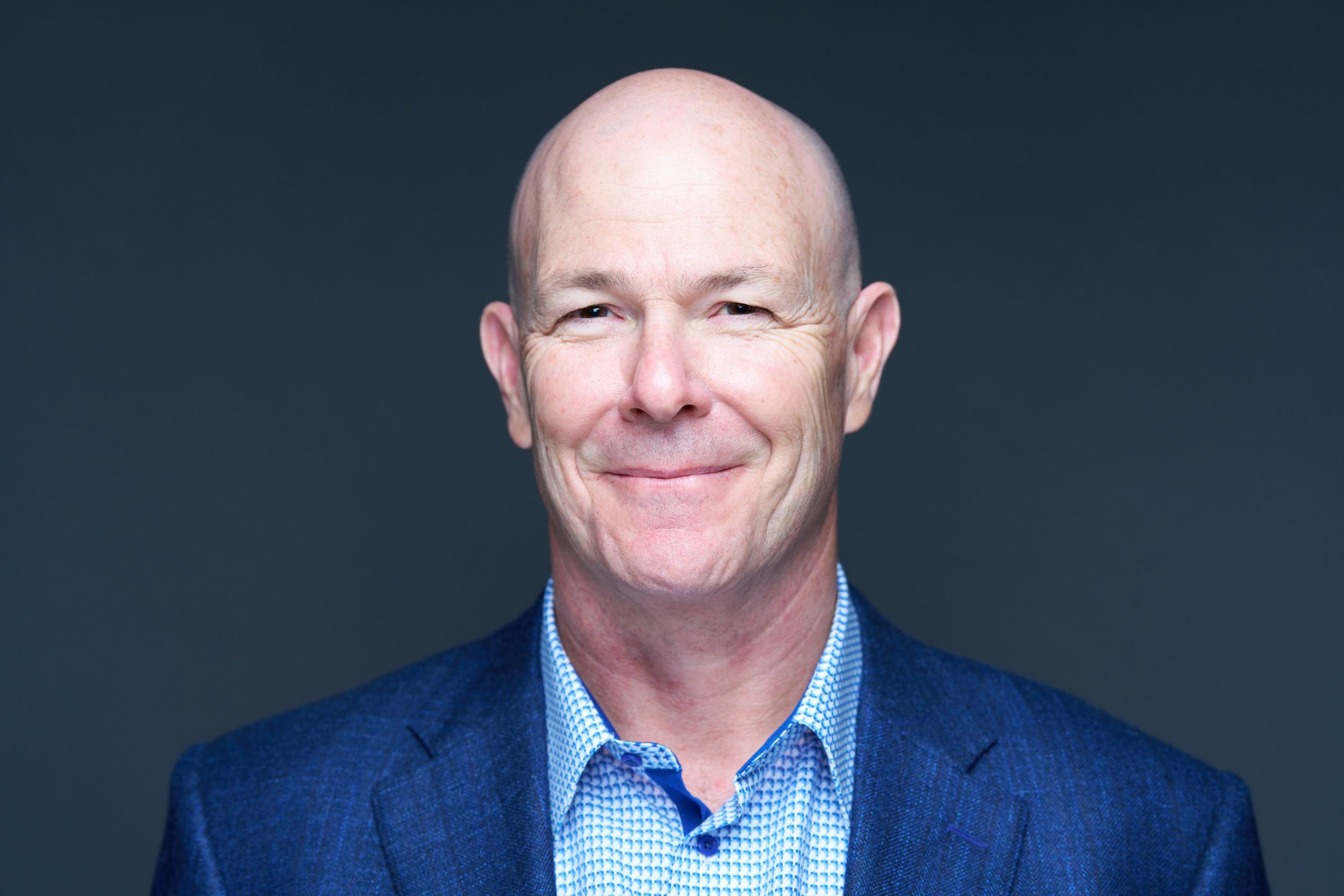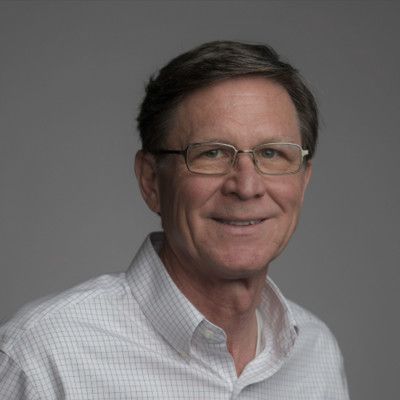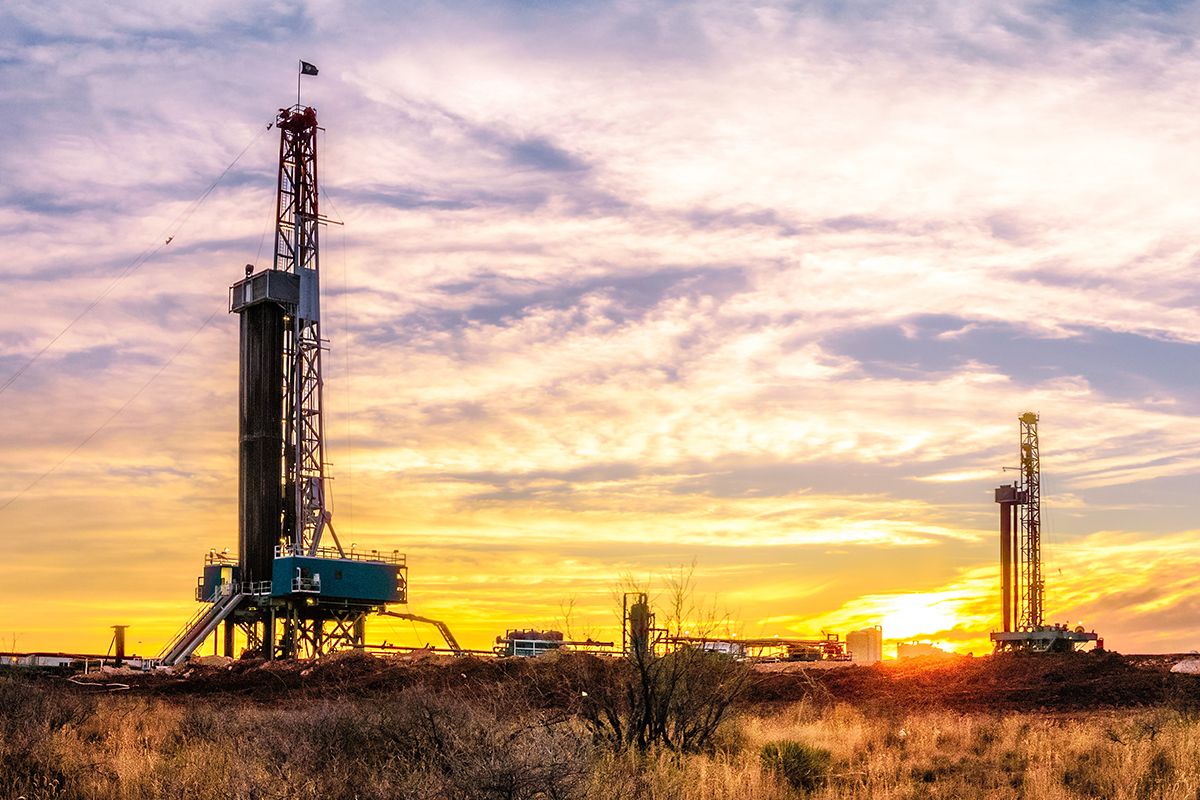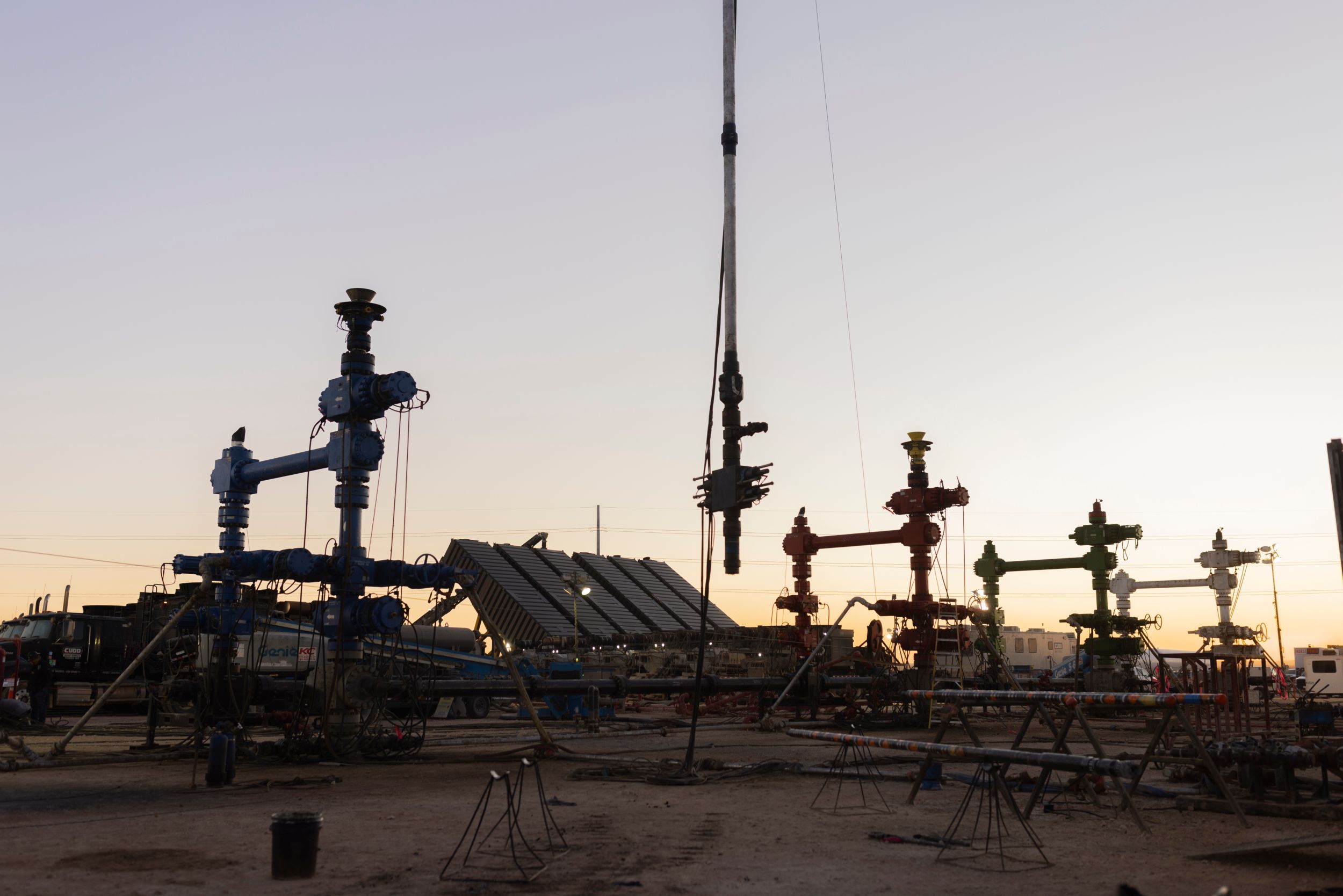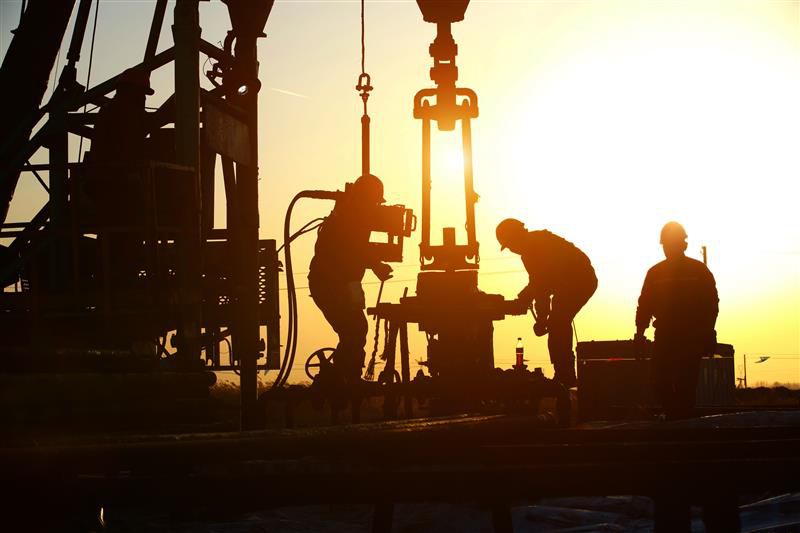00:00:03 Brad Keating
This episode of the Energy Pipeline is sponsored by Caterpillar Oil and gas. Since the 1930s, Caterpillar has manufactured engines for drilling, production, well service, and gas compression. With more than 2100 dealer locations worldwide, Caterpillar offers customers a dedicated support team to assist with their premiere power solutions.
00:00:29 Russell Stewart
Welcome to the Energy Pipeline Podcast with your host, Russell Stewart. Tune in each week to learn more about industry issues, tools and resources to streamline and modernize the future of the industry. Whether you work in oil and gas or bring a unique perspective, this podcast is your knowledge transfer hub. Welcome to the Energy Pipeline. Hey, everybody. As always, thanks for listening today and thank you. Thanks to Caterpillar Oil and Gas for sponsoring the podcast today. My guest on the show is Brad Keating. Brad is the president of edt. That's Electric Drilling Technologies. Brad, thanks for coming on the show Horizon.
00:01:13 Brad Keating
Thanks very much for having me. Appreciate you and for Caterpillar sponsoring the podcast.
00:01:18 Russell Stewart
Well, it's my pleasure. And we. We kind of have a saying around here sometimes that he who tooth not his own horn may never hear his own horn tooted. So I don't mind tooting my own horn. I also don't mind tooting the horn of our guests. One of the reasons people listen to this podcast is because I always say it's not because of the quality of the host, it's because the quality of the guests that come on. So to have the president of a company like this is an honor on my part, and it's because we get guests like this is why people listen to it. So, Brad, tell me a little bit about yourself.
00:02:03 Brad Keating
Well, Russell, like you mentioned, I'm president of Electric Drilling Technologies, which has been in business since 2008, and we got our start in the Barnett Shale with the goal of reducing the impact of drilling in an urban environment.
00:02:20 Russell Stewart
Yeah, that was a big deal back then.
00:02:23 Brad Keating
It was. You know, Chesapeake Energy had just started drilling for natural gas in the Fort Worth and Arlington area and specifically at the Dallas Fort Worth airport. And they needed to figure out a way to reduce the emissions of drilling. And operating rigs off the grid was one of the things that was specified as part of that deal. And electric drilling got involved at that point in time with just some auxiliary equipment. But we worked with Chesapeake and came up with a product that they realized more benefits than they expected at the time and wanted to expand it beyond the airport. So the relationship began at the DFW airport. We, we grew it and expanded around the Metroplex. And the benefits were not just emissions and reduced traffic. But they realized that they were saving some money along the way. So it was an unexpected favorable impact from a process they hadn't anticipated at all. So that's how electric drilling got its start, and that's how I got into the oil and gas business.
00:03:42 Russell Stewart
Well, you just go ahead. I'm sorry I interrupted you.
00:03:47 Brad Keating
And since then, we've, you know, electric drilling has. Has expanded from the DFW area to where the. The unconventional oil and gas business has been in the last 10 to 15 years, which was here for natural gas, then the Bakken for. For oil, and the boom of, you know, 12 to 2012, 2014, 15 and on, and then moving on to the DJ basin, where environmental pressure was extreme. We helped operators out there that needed to reduce their environmental impact as well, and finally to the Permian and Delaware Basin, where we've got our base of operations today and help our customers out there to reduce their drilling costs and reduce their emissions and just try to drill in a little more environmentally friendlier way.
00:04:41 Russell Stewart
Well, we're all. We're all for that. You. You said something that was very important just a few minutes ago, which is why I kind of jumped in there and interrupted you. You talked about how Chesapeake figured out that. That there was economics to this thing. And I'm a big proponent of the oil and gas industry, and I've often said that oil and gas is not the problem with the environment. Oil and gas is going to be the solution to the environment. And the way they're doing it is they're figuring out ways like doing this electric drilling and finding out that it benefits the environment, but it's also economical. And that's the key to all of this. Your headquarters in Dallas, Fort Worth area?
00:05:35 Brad Keating
Yes, sir. That's where our corporate headquarters are in Dallas, Fort Worth, and our operational headquarters are in Midland.
00:05:43 Russell Stewart
In Midland. Okay. All right. You know, you mentioned about Chesapeake and the Barnett Shell. You are. I don't know what your music tastes are, but back in the 70s, there was a. There was a rock and roll group called Meatloaf, and they had a very popular song. And one of the lines in the song was you for oil on a city street. And Chesapeake came along, kind of changed that.
00:06:13 Brad Keating
Yeah, Chesapeake kind of changed that music when they drilled everywhere from downtown Fort Worth to around the suburbs of Arlington.
00:06:22 Russell Stewart
And right at the people's backyards, practically. Okay, so we're talking electric drilling technologies. And what I want to do, Brett, is introduce a term that, that some people may or may not be familiar with, and if they Are, it can mean different things to different people. But the term is micro grid. So what's a micro grid and how does it differ from, say, a traditional utility connection?
00:06:55 Brad Keating
Well, I think the distinction between micro grid and public utility grid is usually that a micro grid is, is not attached to a public utility grid and it's, it's got its own power source. You know, it's, it's what it's considered, I guess a micro grid because it's, it's usually privately owned by a single customer that has decided they need to put in an electrical distribution system for a large scale electrical requirement. You know, it's. Micro grid is not really a, it's not the most accurate term because a micro grid could have generation sources that are miles from where they plan to use it. Like in West Texas, where a micro grid's installed, they might have natural gas reciprocating engines or turbines at a location where their feedstock is located. And, and it might be five or six miles before the end of the line is set where either a drilling rig could be located or many different production units are used along the way. So that's what a microgrid is.
00:08:15 Russell Stewart
Okay, so it's not as simple as plugging something into an outlet.
00:08:22 Brad Keating
No, rarely is anything unless you're actually plugging something into an outlet with electricity, it's never quite that simple. You know, you, with a, you've got a, you've got a lot of different physical, physical challenges with electricity. And you got to generate it in one place and you usually want to use it in another. And that requires changing, changing voltages and things to be able to efficiently transmit the power. You know, when you, when you think about the public utility grid, the generators are, are generating power in many cases tens or hundred hundreds of miles away from the end users. But they've got to get the power from there to where they're going to use it. And they sometimes boost the voltage up to as high as 345,000 volts. And the microgrid has the same challenges at a small scale. So you've got to have your power source, you've got to generate electricity, and then you've got to get it to where you're going to use it, and then you've got to transform that, that voltage back down. And so there's, there's just a lot of steps in the process. And anyone who plans and builds and utilizes a micro grid has got to deal with all those different variables.
00:09:42 Russell Stewart
Okay, so, so you guys go in there, you know, Electric drilling technology. So you're, you're talking about, you're talking about drilling rigs that, that run 100% on electricity?
00:09:59 Brad Keating
Yes, sir. Most, most drilling rigs, most modern drilling rigs run on electricity, but usually the, the drill, the electricity that they use is generated by three or four big generators which, which would, you know, frequently be used in something like a locomotive engine. And those generate the electricity. And, and the drilling rig, the standard, standard power source for those generators.
00:10:27 Russell Stewart
And those are diesel, right?
00:10:29 Brad Keating
Yes, sir. Those are, those are powered by diesel. They're, you know, in some instances these days are also powered by natural gas.
00:10:36 Russell Stewart
Right. Or even a combination of the two. Caterpillar has dual fuel engines and that sort of thing.
00:10:44 Brad Keating
Caterpillar's got their dynamic gas blending engines that they've introduced that, that allow the users to use both fuel sources.
00:10:53 Russell Stewart
But you guys are. Go ahead.
00:10:56 Brad Keating
Yes, sir. What electric drilling does is we provide portable electrical substations to transform the grid voltage to a voltage used at the drilling rig. So our equipment has switching equipment that allows the drilling rig to keep the generators on site and plugged in in case of a power outage and they need them. But our equipment becomes the primary power source to feed the rig from the grid.
00:11:25 Russell Stewart
Okay, so you guys, EDT builds that micro grid or somebody else does it and y' all just plug in.
00:11:32 Brad Keating
We just plug in. We, we would be the equivalent of, we, we would be the equivalent of a transformer, like when you plug in your laptop or if you're charging your cell phone. We are the, we are the scale of transformer that transforms the electricity for the drilling rig. So we bring the transformer, we bring the extension cord and we bring the team to plug it all in at the location to make sure everything's done safely and efficiently when the rig moves.
00:12:01 Russell Stewart
Okay, and how big are your drilling rigs and how deep can you go?
00:12:09 Brad Keating
Modern drilling rigs are drilling anywhere from probably 30,000 foot wells. A lot of them are going out to, to four mile on the laterals. Yeah, four mile laterals. And in some cases they're even drilling used.
00:12:25 Russell Stewart
Yeah, yeah, I've seen that. And you can do that with your rigs?
00:12:31 Brad Keating
Yes, sir. We don't own the rigs, you know, the H&Ps of the world and the neighbors drillings of the world own the drilling rigs.
00:12:39 Russell Stewart
Okay.
00:12:40 Brad Keating
We provide the power source specifically so they can operate off the grid. So we're a third party. We come in and fill that role.
00:12:48 Russell Stewart
And so what we talked a little bit about it when you were talking about how you initially got involved with Chesapeake and the environmental considerations and that sort of thing. But there are other things that drive oil field operators to use these micro grid solutions, and that's because you are off the grid.
00:13:18 Brad Keating
Well, the things that are driving the oil field to utilize micro grids is, you know, it's kind of funny. It's evolved. It used to be they needed a power source to provide electricity because the utilities just simply couldn't build the lines fast enough.
00:13:38 Russell Stewart
Okay.
00:13:39 Brad Keating
And now it's become more of a scarcity issue because they still can't build lines fast enough, but there's not enough generation sources to provide the power that they need once the lines are built. So where a customer might have been able to get 100% of the capacity they needed for an operating area, now the utility only might have enough power to provide half of that. So they've got to fill the gap on how they're going to provide the electricity to, to power the other half of their operation. And the only way that they have or the most economical and environmentally friendly way they've found to do it is by building a microgrid that's powered by, you know, natural gas or diesel generators or a turbine powered by one of those sources.
00:14:34 Russell Stewart
So when you're evaluating a microgrid for an oil field site, are there considerations that maybe you wouldn't have otherwise anything in particular customers are looking for?
00:14:50 Brad Keating
I think in, in most instances when, when a customer is trying to figure out the type of grid they want to use or if they want to install a microgrid, they're, they're considering what their most available feedstock is, which. In West Texas, yes, That's, you know, usually very available. It's, you know, environmentally friendly in that it's a clean burning fuel and it's relatively inexpensive. So those are the three qualities you want in a fuel stock. And they've got those available. So they look at that. And then the next, next question is how, how much power do they need? So that helps determine what the type of generation asset they're going to, they're going to utilize is going to be whether it could be a reciprocating engine or a turbine. They've got to determine what the requirements are. You know, so which one best fits the scale of power that they need?
00:16:01 Russell Stewart
Okay. And so you talked about how you started off in the, in the Barnett, but then you, you're talking about West Texas, and then you mentioned some of the, some of the other basins you guys are Micro grids are rapidly expanding.
00:16:22 Brad Keating
Yeah, I think in the United States micro grids, especially in the oil field, are becoming more popular and feasible for customers to implement themselves. Usually micro grids involve the operator contracting with a third party to provide the generators. I think the goal of the micro grid is a future that it someday it will be connected to the public utility grid. But in the short term the operator needs generators to connect to that grid to provide power to the distribution system. And there are third party resources that provide those generators and they have become much more available in the last few years. It used to be there were just a few, few resources to rent these generators from and now there are, there are multiple companies that do it and they do it at scale to provide the resources that the operators need in the different basins. And you know, because of that it's, it's become more economical for them to do it.
00:17:32 Russell Stewart
Now you said something that intrigues me. You said the ultimate goal or the future goal is to actually have these micro grids actually plug into the public utility system.
00:17:51 Brad Keating
Well, I think so. I think that still the very large generators with combined cycle power plants are probably the least expensive way to generate large amounts of electricity. And these various more, I guess, shorter term lead times, less permitting required generation assets are more deployable but less economical. So I think over time there will be some gravitation towards putting some of these grids to at least draw some of the power that they require from the utility grid. And that's where you know, we've, we've partnered with caterpillar using their ECS 400 control with our, what we call the Hybrid Sync product which is EDT's portable substation with the Caterpillar ECS 400 control that allow the, it's a complete power supply for a drilling rig that utilizes the, the drilling rigs generators in combination with the grid to power the rig. And that same control system is something that the Caterpillar deploys for large scale applications to synchronize the utility grid with the generation assets. Generation assets, Caterpillar DGB engines or Caterpillar solara turbines or whatever might be powering a microgrid is going to be controlled by this Caterpillar ECS control and synchronized with the grid using their control systems to provide a homogenous power source utilizing the grid and their customer owned generation to power whatever the load the customer needs and work with the grid.
00:20:00 Russell Stewart
And that provides quite a bit of flexibility to the operators, right?
00:20:05 Brad Keating
Absolutely, yes sir, it does. It has benefits and you know, and Flexibility. It, a drilling rig is a very dynamic load because, you know, you picking up pipe, it's stopping, it's starting. It's got pumps that ramp up and down and electricity generators, like the most stable load that is possible. And so by utilizing the drilling rigs, generators or battery energy storage system at the load, we're able to stabilize the draw of the rig and it makes it more attractive to a generator, whether it be a microgrid or a, a public utility.
00:20:53 Russell Stewart
Right, okay. And so the Permian Basin is kind of at the forefront of all this micro grid development. And that's driving it into other areas or what?
00:21:06 Brad Keating
Yes, sir. The, you know, I'd say the oil and gas industry in general has a, is a, is a catalyst for the, you know, for the energy industry in general. If you look at what, you know, electrification that's, that's occurred in the, in the oil field, whether it be the Permian, Delaware Bakken, you know, the US Oil and gas operators have, have driven electrification in the industry and the electrification has driven efficiency. You know, it's driven the efficiency of drilling rigs and micro grids is something that the oil and gas industry began implementing probably eight or nine years ago. And they began the investment that has continued to snowball. And that investment in the microgrid market that the oil and gas business made has enabled the, the micro grid and the, the generator market to be able to service the industries that it does today. It, the oil and gas industry was kind of its, some of its larger scale proving ground, I think. And the generation resources, all the generation assets that Caterpillar sells are now being utilized to power large scale data centers to support the AI market.
00:22:42 Russell Stewart
Okay, that was, you're ahead of me here. That was my very next question. So we're talking about micro grid technology, you know, for drilling, you know, for drilling oil and gas. Well, but it's going to support oil field operations in other areas like digitalization, maybe energy storage and sustainability.
00:23:07 Brad Keating
Absolutely. At the end of the day, it's large scale power. You know, the oil industry demanded large scale power as quick as they could get it at the most economical rates that they could, they could afford to implement it at. And those things happen because of the service providers that supported the industry. And those same service providers are now pivoting to other industries to support them. And you know, the largest, largest industry demanding those services now is our data centers and AI. And the scale of the data center and AI power requirement is tremendous as it far exceeds the oil and gas requirement.
00:23:54 Russell Stewart
Yeah, yeah. And so that's, this may be, I mean, that's a, that's, that's very critical and they're looking for answers to that. So some of this microgrid technologies may be the ace in the hole, huh?
00:24:10 Brad Keating
Yeah. Yeah. And really Caterpillar's products and supporting the micro grids from our, you know, like we talked about, they support oil and gas. Oil and gas needs this solution. But this solution is implementable across many industries. And you know, whether it's an oil on oil, oil drilling rig that needs to be able to stabilize its load, or a commercial building that's got generation assets that, that might be able to be utilized to support grid stability, or a data center that needs micro grid and generation assets to support. But as a grid develops and can be tied into that data center, the controls will be able to support the requirements of the data center with generation and grid and the Caterpillar control will help it all work together.
00:25:08 Russell Stewart
Okay, so final question or maybe questions. I'm curious and I didn't. We, we jumped off here so fast. How did you get involved in this?
00:25:27 Brad Keating
You know, I got involved as the, you know, sit as a salesperson sitting in a meeting, listening to Chesapeake Energy and what they needed to make things work at the airport. And from there we put the idea on a Nepkin and figured out a system that would work and be deployable pretty much to any grid in the country. And what would be able to be flexible to tie into any drilling rig. And me and a team of other people that were far smarter than I were or I am to planned it and engineered it and make it work and continue to push it to the market today and make things work seamlessly with our customers.
00:26:17 Russell Stewart
So you had an electrical engineering background?
00:26:20 Brad Keating
No, sir.
00:26:21 Russell Stewart
Wow.
00:26:22 Brad Keating
I just had some good engineers.
00:26:25 Russell Stewart
You're just smart enough get people who did. That's very impressive, Brad. That's very impressive.
00:26:32 Brad Keating
Yeah, I wish I could say I was, but I can't wear that hat. That takes people smarter than I am.
00:26:40 Russell Stewart
Well, Brad, again, as we talked about at the beginning, you're president of this company, so I know you have a lot of responsibilities and I know you have a lot of time pressures and that sort of thing. And so I really appreciate you taking the time to come on the podcast and talk about this before we sign off. Is there anything I missed or anything you'd like to add to what we've talked about here?
00:27:08 Brad Keating
Well, no, I thank you for your time and I just would encourage all of our customers to continue to seek out whatever sources of energy that they could utilize to make their make their projects most efficient. As they do that, it's going to be micro grids and electrification. And you know, fossil fuels are very important to our absolute energy energy inventories. They do not go away by any way, shape or form. And I continue to appreciate them all. So that's the end of what I have to say and I really appreciate you having beyond Russell and it's a pleasure.
00:27:51 Russell Stewart
No, actually the pleasure is all mine, but. So I guess there's maybe a lot more information on your website.
00:28:00 Brad Keating
Yes sir, there is more information on our website.
00:28:04 Russell Stewart
And so that would be www.EDT.com or what?
00:28:10 Brad Keating
No sir, it's electricdrilling.net electricdrilling.net okay, we'll.
00:28:15 Russell Stewart
Put that in the show notes. We'll put your LinkedIn URL, contact info in the show notes and fol you can reach out to electric drilling technology to learn more about low carbon and sustainability and oil field electrification and grid reliability. Everybody out there, as always, we thank you for listening. We always appreciate it when you leave reviews and post us on LinkedIn and share it with your other friends and tell your other friends to listen to us. And again, thanks to Caterpillar Oil and Gas. We'll see you next time. Thanks for listening to oggn, the world's largest and most listened to podcast network for the oil and energy industry. If you like this show, leave us a review and then go to oggn.com to learn about all our other shows. Don't forget to sign up for our weekly newsletter. This show has been a production of the oil and gas.



